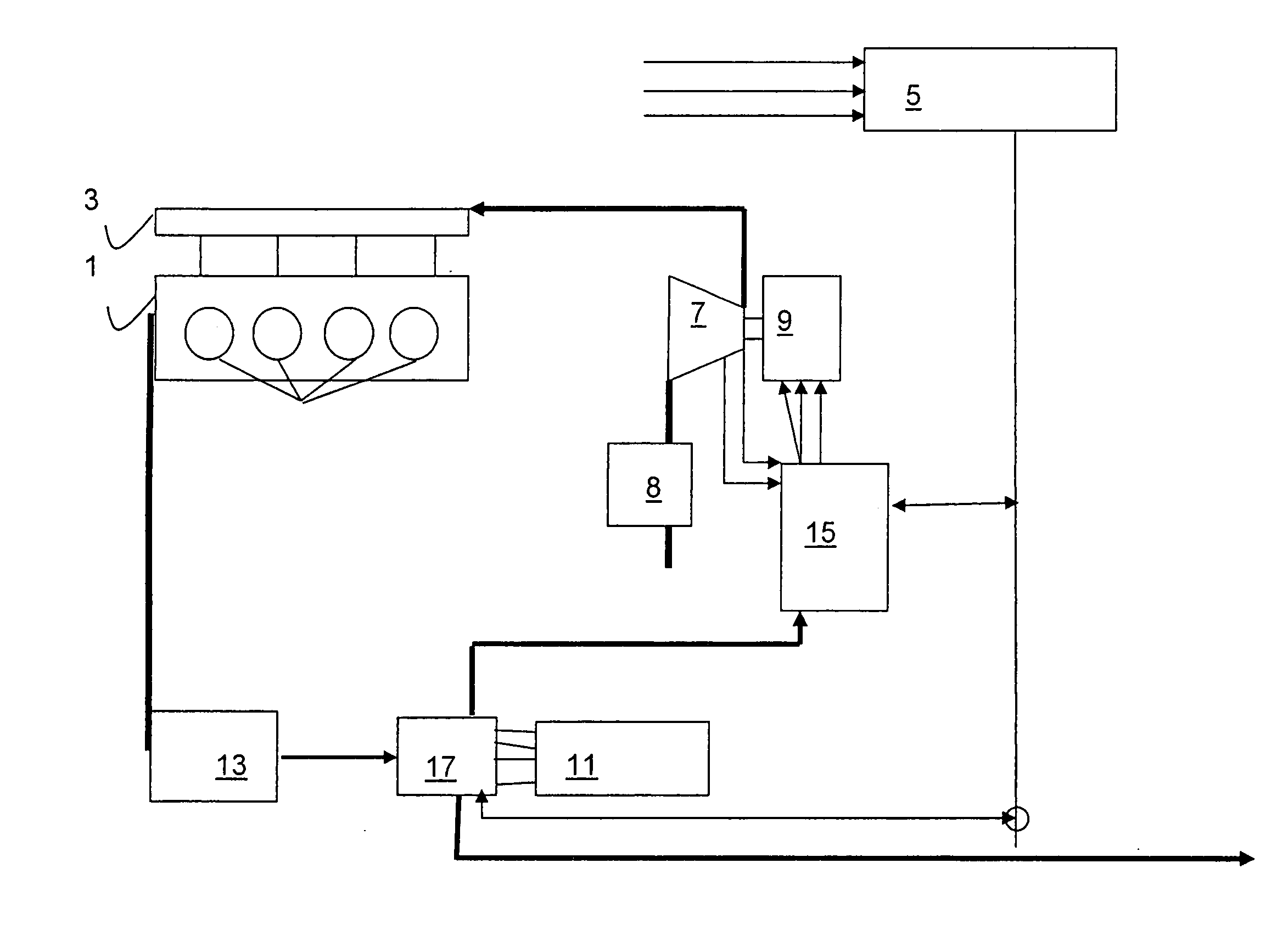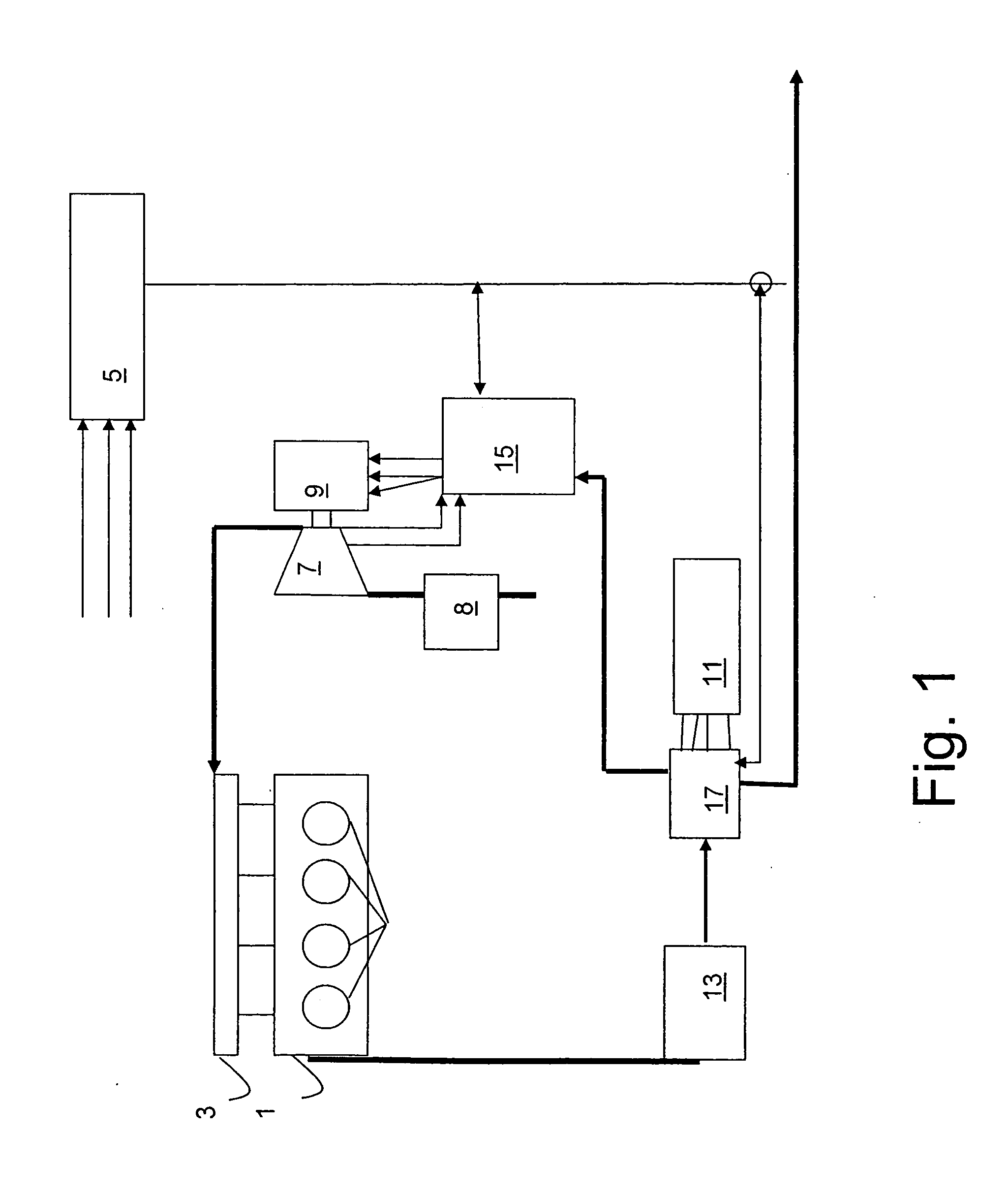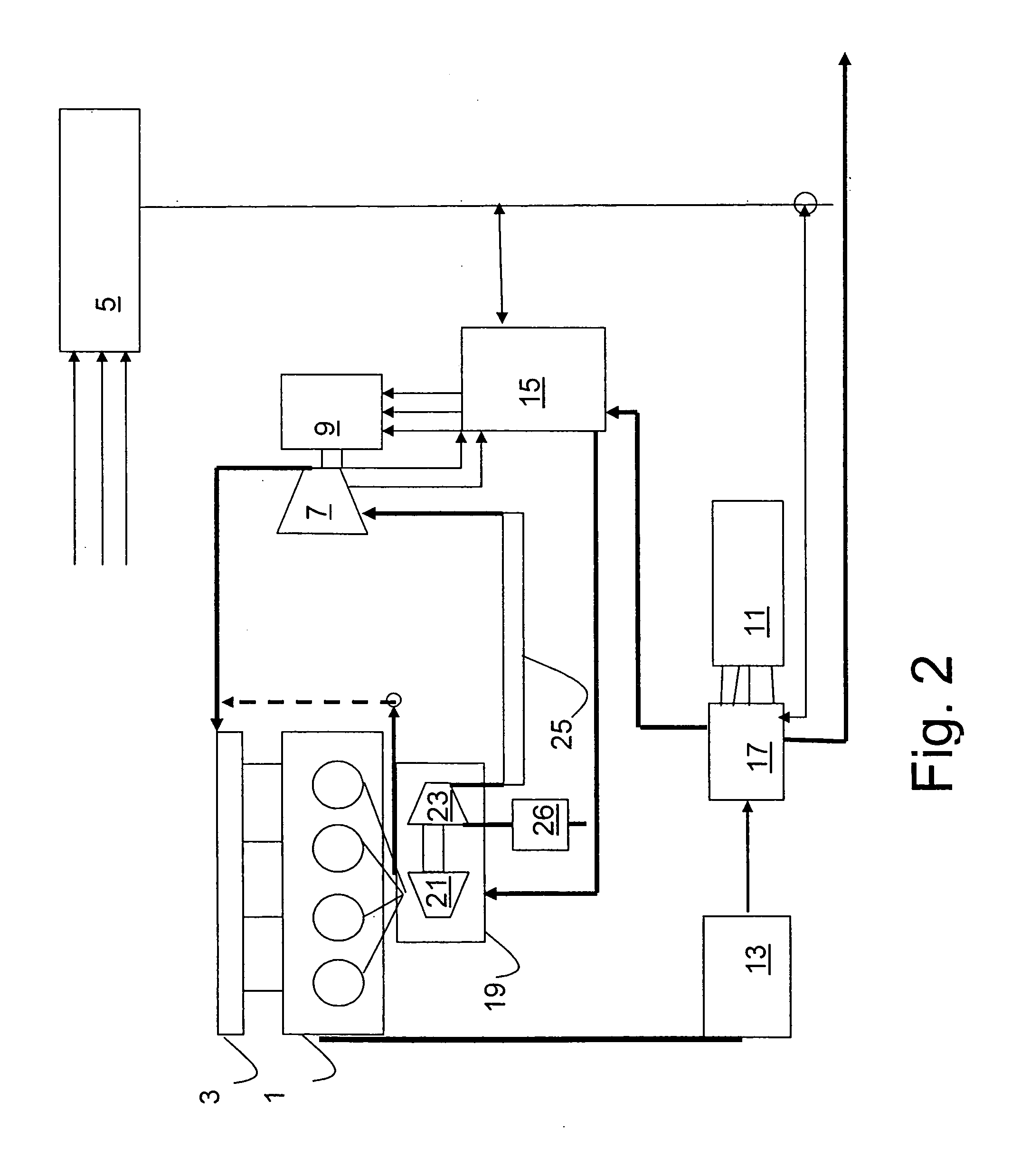Control unit, supercharging system, vehicle comprising a supercharging system and method of controlling a supercharging system
a supercharging system and control unit technology, applied in the direction of electric control, combustion engines, machines/engines, etc., can solve the problems of inability to control the compressor very precisely, the maximum power that can be delivered is limited, and the turbocharger will not always be able to provide sufficient compression, etc., to achieve more precise control, reduce communication, and reduce the effect of em
- Summary
- Abstract
- Description
- Claims
- Application Information
AI Technical Summary
Benefits of technology
Problems solved by technology
Method used
Image
Examples
Embodiment Construction
[0036]FIG. 1 illustrates schematically the function of an electrically controlled compressor according to the present invention. An internal combustion engine 1 has air, or air-fuel mixture, delivered to it through an inlet 3, as is common in the art. An engine control unit 5 controls the function of the engine 1. To do this, the engine control unit receives various input signals indicative of engine and vehicle operating parameters, such as the engine speed, and the position of the accelerator pedal. Connected to the engine 1 is an electrically controlled supercharger 7, here referred to as the e-compressor. There is an air inlet to the e-compressor, through an air filter, as is common in the art. The e-compressor 7 is driven by an electric motor 9, which is powered by a battery 11. Preferably, but not necessarily, the battery is charged by a generator 13 driven by the engine 1. The battery can be the same battery that is used for the starting, lighting and ignition requirements of...
PUM
 Login to View More
Login to View More Abstract
Description
Claims
Application Information
 Login to View More
Login to View More - R&D
- Intellectual Property
- Life Sciences
- Materials
- Tech Scout
- Unparalleled Data Quality
- Higher Quality Content
- 60% Fewer Hallucinations
Browse by: Latest US Patents, China's latest patents, Technical Efficacy Thesaurus, Application Domain, Technology Topic, Popular Technical Reports.
© 2025 PatSnap. All rights reserved.Legal|Privacy policy|Modern Slavery Act Transparency Statement|Sitemap|About US| Contact US: help@patsnap.com



